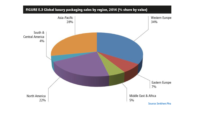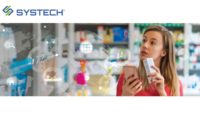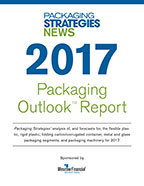Consumer engagement trend drives innovation in smart packaging, according to Smithers Pira
Smithers Pira (smitherspira.com) publishes new report, The Future of Smart Packaging to 2021, which provides an in-depth, long-term assessment of the rapidly evolving market for this segment that includes both active and intelligent packaging technologies.
The global smart packaging market value is forecast to grow during the five-year period to 2021 at an annual rate of 7.5% to $7.6 billion (€6.9 billion).
Active packaging is an extension of the protection function of a package and is commonly used to protect against oxygen and moisture.
Intelligent packaging is an addition of the communication function of traditional packaging, and communicates information to the consumer based on its ability to sense, detect, or record external or internal changes in the product's environment and information about the status of the product and other information useful to supply chain managers or consumers.
“The high cost of active and intelligent packaging has always been a factor restraining growth, particularly since cost-competitiveness is a key determinant of success in the retail industry.” says David Platt, author of the report.
“Smart packaging technology providers are however getting the unit cost of smart tags and labels down and raising their performance.”
The global active packaging market value is forecast to grow during the five-year period to 2021 at an annual rate of 4.9% to $5.6 billion, while intelligent packaging is forecast to grow 18% per annum to almost $2.0 billion.
Intelligent packaging is the dynamic and potentially high-growth market with developments in printed electronics, Cloud computing and the Internet of Things driving the adoption of intelligent packaging technologies. Whereas active packaging is a relatively mature market in comparison, although there are good growth opportunities for several technologies in niche markets.
The growing consumer concern regarding food waste and food safety is being met by both active and intelligent components. Active technology can now routinely double the effective shelf life of many perishable products, while intelligent packs offer clear signals about the condition of the product, removing the need for arbitrary ‘best before’ labels.
Smithers’ research shows that brand owners now want usable products, not just a technology or component, that adds real value to their brand, rather than short-term marketing gimmicks. They also want to see active and intelligent packaging developers working together, and also collaborating with design houses and packaging manufacturers, to provide total finished solutions.
The Future of Smart Packaging to 2021 is based on exclusive primary and secondary research. Primary research included in-depth interviews with smart packaging technology developers, smart packaging suppliers and brand owners. Secondary research was based on a combination of information sources including company websites, company reports, and conference proceedings.
Looking for a reprint of this article?
From high-res PDFs to custom plaques, order your copy today!






